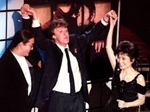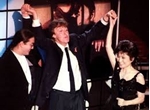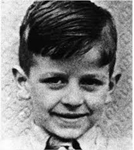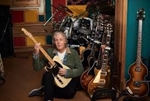- Register
- Log in to Tune-In
- Wishlist (0)
-
Shopping cart
(0)
You have no items in your shopping cart.
Beatles News

The exBeatle George Harrisonclassic “My Sweet Lord”celebrates half a century after its successful appearance in 1970, still surrounded by controversy of allegations of plagiarism and the spiritual aura of his Hindu inspiration.
Harrison was known as the “Quiet Beatle” for his preference to stay away from fame, despite being a rock star, and for his interest in Hinduism, which began to mark his life following the American Beatles tour in 1966.
The guitarist of the Liverpool quartet released the hit single “My Sweet Lord” on his first solo album “All Things Must Pass” (1970), after the separation of the Beatles.
The song, recorded at Abbey Road studios in London under the production of Phil Spector, featured musicians such as guitarist Eric Clapton and fellow ExBeatle Ringo Starr on drums.
Source: inspiredtraveler.ca
details
The story of the Beatles did not end happily. Break-ups are seldom cheerful. But it was not, as some of us thought at the time, the end of the damn world.
Craig Brown tells that story in 150 Glimpses of the Beatles, from the early days to 1970, when the four members of the band went their separate ways. But what Brown does best is remind us why the split did seem at the time—to Beatles fans at least—like the end of everything.
I don’t know if Brown’s is one of the best books written about the band because I’ve never managed to finish a book about them, but it’s one of the best books I’ve read on any subject in a good while.
With a handful of exceptions (the autobiographies of Keith Richards and Count Basie, Nick Tosches’ book about Jerry Lee Lewis), I’ve never been too interested in books about bands or musicians, even ones I like. I picked up Brown’s book because I’m a huge fan of his last book, 99 Glimpses of Princess Margaret. I had never been much of a royals fan either, but I thought, well, I’ll try a glimpse or two and see how it goes. In no time, Brown hooked me for the whole ride. He did it again with the Beatles.
Sou details

Paul McCartney was an ex-Beatle on a mission as he arrived at the Waldorf Astoria hotel in Midtown Manhattan on 19 January 1994. He was there for the induction into the Rock and Roll Hall of Fame of John Lennon, his friend, collaborator and occasional rival.
Also at the ceremony was Lennon’s widow Yoko Ono, who would appear that night onstage alongside McCartney. In Beatles lore, the two were sworn enemies (an overstatement, though McCartney had admitted to feeling “threatened” by Ono when she started turning up to band recording sessions with Lennon). So it was seen as hugely significant that they would come together to honour a fallen husband and comrade. This was the hell-freezes-over moment many “Fab” fanatics had never imagined they would witness.
“I wish John could have seen this,” Ono said as she and McCartney publicly patched up whatever differences they had. Later that evening, back at Yoko’s residence, she and her 19-year-old son, Sean, went further with the reconciliation by handing over to McCartney and his wife Linda several battered recordings, dating from the late 1970s. And with that, began the next chapter in the story of The Beatles.
Sourc details

Joe Wong and Mary Timony have released a new cover of John Lennon and Yoko Ono’s song “Every Man Has A Woman Who Loves Him” as a 40th anniversary celebration for Lennon and Ono’s album Double Fantasy. Dave Fridmann of The Flaming Lips mixed Wong and Timony’s version of the track.
Wong and Timony create a psychedelic soundscape with deep vocals and transcending synths. Wong slowly sings Lennon’s lyrics, creating a haunting sound that pulls listeners into an alternate dimension. Drums slowly beat beneath to create a softer sound, the track continuing to have an edge within its instrumentals. Timony provides slithering back-up vocals as she and Wong dance and sway amid the plucking guitars and deep bass.
“The song has always felt haunting and profound to me, and is an under appreciated song in the Ono/Lennon oeuvre,” Wong said in a press statement. “Although the song was recorded during the week of Lennon’s 80th birthday (last month), the track continues to inhabit my dreams, and that’s a good thing.
Source: Ariel King/music.mxdwn.com

Paul McCartney was an ex-Beatle on a mission as he arrived at the Waldorf Astoria hotel in Midtown Manhattan on 19 January 1994. He was there for the induction into the Rock and Roll Hall of Fame of John Lennon, his friend, collaborator and occasional rival.
Also at the ceremony was Lennon’s widow Yoko Ono, who would appear that night onstage alongside McCartney. In Beatles lore, the two were sworn enemies (an overstatement, though McCartney had admitted to feeling “threatened” by Ono when she started turning up to band recording sessions with Lennon). So it was seen as hugely significant that they would come together to honour a fallen husband and comrade. This was the hell-freezes-over moment many “Fab” fanatics had never imagined they would witness.
“I wish John could have seen this,” Ono said as she and McCartney publicly patched up whatever differences they had. Later that evening, back at Yoko’s residence, she and her 19-year-old son, Sean, went further with the reconciliation by handing over to McCartney and his wife Linda several battered recordings, dating from the late 1970s. And with that, began the next chapter in the story of The Beatles.
Sourc details

Ringo socks it to 'em in this week's anti-bullying campaign
Beatles legend Ringo Starr has marked anti-bullying week by sharing a photo of himself on Instagram in which he wears odd-coloured socks.
In the picture, Ringo, who recently celebrated his 80th birthday, is seated on a chair in his backyard, giving one of his characteristically generous smiles for the camera.
He is wearing a blue tracksuit and - wait for it - two different-colored socks, a metaphorical image for individuality and diversity.
Source: rte.ie
details
As the whole heavy metal community is hearing postponing news from almost all famous bands all over the world, The Beatles legend Ringo Starr was quite silent about the upcoming shows of his solo band named ‘Ringo Starr & His All-Starr Band.’
Today, Ringo broke his silence about the situation and made an official announcement stating that they had to postpone their all upcoming shows because of the abundance of caution.
Here is what Ringo wrote on the statement:
“This is very difficult for me. In 30 years I think I’ve only missed two or three gigs nevermind a whole tour. But this is how things are for all of us now, I have to stay in just like you have to stay in, and we all know it’s the peace and loving thing we do for each other.
So we have moved the Spring tour to 2021. My fans know I love them, and I love to play for them and I can’t wait to see you all as soon as possible. In the meantime stay safe. Peace and Love to you all.”
Source: Enes K./metalheadzone.com
details
head of his anticipated new memoir, A Promised Land, which hits stores tomorrow, Former President Barack Obama shared an accompanying playlist of tunes on Spotify. The 20-track collection spans a variety of genres and includes such artists as JAY-Z, B.B. King, The Beatles, and John Coltrane.“Music has always played an important role throughout my life – and that was especially true during my presidency,” captioned Obama on Instagram. “While reviewing my notes ahead of debates, I’d listen to Jay-Z’s ‘My 1st Song’ or Frank Sinatra’s ‘Luck Be a Lady.’
Source: Sophie Smith/udiscovermusic.com
details
More than 40 years after his tragic death, fans are finally getting a look inside John Lennon’s final days.
In BritBox‘s original documentary, “Lennon’s Last Weekend”, the iconic Beatles member’s last moments are detailed, including the interview he gave with the BBC’s Andy Peebles just days before he was shot and killed at his home in New York City in 1980.
RELATED: Gal Gadot Reflects On Controversial Quarantine Cover Of John Lennon’s ‘Imagine’: ‘I Had Nothing But Good Intentions’
According to the streaming service, “Lennon’s Last Weekend” relives the last weekend the legendary Lennon was alive, with Andy [Peebles] travelling to New York to relive the story of what really happened on those two fateful days in December 1980.”
In BritBox’s first trailer for the doc, “Lennon’s Last Weekend” will also take an in-depth look at his relationship with Yoko Ono, his early career with The Beatles and his past drug abuse.
Source: Aynslee Darmon/etcanada.com

The Ferrari 330 owned by John Lennon was, in fact, his first car, which is a bold move for someone who just got his driver’s license.
It’s hard not to remember what the Beatles were and how much they influenced the lives of people. Their songs touched the lives of many and could be felt to the core by each and everyone regardless of their age. John Lennon and Paul McCartney helped shape the band and played a significant role in its success. Upon reaching incredible heights and literally becoming a global sensation, the Beatles started to become more influential and had a few bucks to spare on luxuries.
Known for extravagant purchases and being outspoken on many occasions, John Lennon was equally as good at creating controversies as he was good at music. That aside, as with every passionate artist, he was an avid fan of exotic sports cars, especially Ferrari.
Source: Kiran Menon/hotcars.com
details
Paul McCartney and Michael Jackson are two of the most influential musicians in history, and although they originally had a good relationship, it turned sour for “business.”
Some people believe that mixing friendship and business is the perfect recipe for disaster. Paul McCartney, who rose to fame with the English band The Beatles, learned it the hard way.
McCartney used to be a good friend of the King of Pop Michael Jackson. Initially, they got together for songwriting collaborations, and they came up with a few songs, including “The Girl Is Mine” and “Say, Say, Say.”
The former was included in Jackson’s “Thriller” album, while the latter made it into McCartney’s “Pipes of Peace” album.
During that time, McCartney supposedly talked to Jackson about the lucrative business of music publishing rights, explaining some of the advantages of owning the rights to other musicians' popular and beloved music.
Source: Edduin Carvajal/news.amomama.com
details
The Beatles were one of the most popular bands on the planet. After touring the world countless times, the Fab Four were inundated with letters from fans who sent well-wishes and gifts to them. George Harrison was quite the gentleman when it came to his fanmail, as it seems he replied to a great deal of them personally. One cheeky instance saw him responding with a lengthy set of instructions detailing how to mess up Paul McCartney’s car.
Harrison responded to Beatles super fan Susan Houghton in 1962, first thanking her for the gifts she sent his mother.
He wrote: “I hope you had a good chrimbo, and have a happy nuclear [peace sign] too. Thank you for giving my mum flowers and chocs. [It was you wasn’t it??]”
The Beatle then concluded the thanks with a quote from John Lennon, as he said: “Thanks also for the card, in fact THANKS A HEAP SUSAN. ‘Your too kind’ - John Lennon.”
Oddly enough, Harrison then went on to list seven key steps in cleaning a car - and subsequently dumping the dirty water on McCartney’s prized Ford.
Source: Callum Crumlish/express.co.uk

Sir Ringo Starr has dedicated his life to music, first with The Beatles and then as a solo artist. However, his beginnings were difficult to manage, and he spent a year away from his family. Despite these hardships, Sir Ringo was able to find the thing he loves most: the drums.
Sir Ringo was born Richard Starkey, the only child of confectioners Richard Starkey and Elsie Gleave on July 7, 1940.
Like his bandmates, he is from Liverpool, though he was born in the Dingle area of the inner city.
Young Richard Starkey was first introduced to percussion as a young boy, but his introduction to this instrument was a very sad one indeed.
According to Bob Spitz’s The Beatles: A Biography, Sir Ringo developed appendicitis at the age of six.
Source: Jenny Desborough/express.co.uk
details
Music is Healing
Singer Paul McCartney says cancer survivors have told him that his music helped them cope during treatment.
During a cancer fight, exploring creative outlets such as music can really lift peoples’ spirits.
Experts say that patients who are positive often see more successful treatment outcomes.
Iconic singer Paul McCartney, 78, knows first hand what it’s like to lose someone to cancer, and now, really understands how healing music can be to some fighting the disease. The former Beatles bassist reflects on a very special moment that made him realize how much his tunes has influenced others.
McCartney is known as one of the most adored singers in the last few decades, and his dulcet tones seem to have had a lasting impact on the people who need it most. During dark times, blasting your favorite songs can really lift you up, and McCartney learned that first-hand from those who faced one of the most difficult challenges — a cancer battle.
Source: Shelby Black/survivornet.com

With "McCartney III," the Cute Beatle makes a spectacular return to form, produces one of his most compelling albums in decades, and reminds us that at age 78, his musical chops are as exquisite and profound as virtually anyone's. Ever.
Working at his Sussex studio, Paul McCartney recorded nearly the entirety of "McCartney III" during the pandemic. A one-man band production in the spirit of his eponymous debut solo album in 1970, "McCartney III" arrives more than 40 years after the release of its predecessor, "McCartney II," in 1980. That summer, the album topped the UK charts and yielded a chart-topping single Stateside in "Coming Up."
In its own fashion, "McCartney III" functions as the logical extension of its precursors, each acting as lodestones of sorts for signal moments across his long career. As with the first two LPs, McCartney took a carefree, homespun approach to his efforts, allowing his imagination to guide the way. As he remarked in the album's press notes about his process during its production, "Each day, I'd start recording with the instrument I wrote the song on and then gradually layer it all up; it was a lot of fun. It was about making music for yourself rather than making music that has to details
